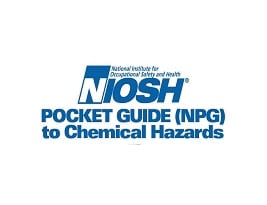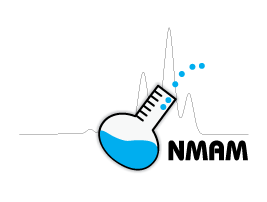Phosgene

Overview
CAS No. 75-44-5
Phosgene (COCl₂) is a colorless gas with a suffocating odor like musty hay. Exposure to phosgene may cause irritation to the eyes, dry burning throat, vomiting, cough, foamy sputum, breathing difficulty, and chest pain; and when liquid: frostbite. Workers may be harmed from exposure to phosgene. The level of exposure depends upon the dose, duration, and work being done.
Phosgene is used in many industries. It’s used in the manufacture of other chemicals, pesticides, and pharmaceuticals. Some examples of workers at risk of being exposed to phosgene include the following:
- Workers in plants where dyes are manufactured
- Manufacturing workers who use it in the production of polymers
- Workers who use it to make pesticides
- Pharmaceutical manufacturing workers in production plants
- Workers who use it to separate ores
- Welders who use it to clean with chlorinated solvents
NIOSH recommends that employers use Hierarchy of Controls to prevent injuries. If you work in an industry that uses phosgene, please read chemical labels and the accompanying Safety Data Sheets for hazard information. Visit NIOSH’s page on Managing Chemical Safety in the Workplace to learn more about controlling chemical workplace exposures.
The following resources provide information about occupational exposure to phosgene. Useful search terms for phosgene include “carbon oxychloride,” “carbonyl chloride,” “carbonyl dichloride,” and “chloroformyl chloride.”
NIOSH Chemical Resources
Related NIOSH Resources
- NIOSHTIC-2 search results for phosgene – NIOSHTIC-2 is a searchable database of worker safety and health publications, documents, grant reports, and journal articles supported in whole or in part by NIOSH.
- NIOSH Worker Health Study Summaries – NIOSH conducts research to prevent illnesses and injuries in the workplace. The NIOSH Worker Notification Program notifies workers and other stakeholders about the findings of these research studies.
Selected Publications
- Emergency Response Safety and Health Database: Phosgene—The Emergency Response Safety and Health Database (ERSH-DB) provides information on high-priority chemical, biological and radiological agents that could be encountered by personnel responding to a terrorist event.
- Documentation for Immediately Dangerous to Life or Health (IDLH) Concentrations: Phosgene—The IDLH documents the criteria and information sources that have been used by NIOSH to determine immediately dangerous to life or health concentrations.
- Criteria for a Recommended Standard: Occupational Exposure to Phosgene DHHS (NIOSH) Publication No. 76-137 (1974). Presents a standard to prevent the adverse effects of exposure to Phosgene over a working lifetime.
- Occupational Safety and Health Guideline for Phosgene—This guideline helps stakeholders conduct effective occupational safety and health programs.
Related Resources
- ATSDR Toxic Substances: Phosgene
- ATSDR Tox FAQs
- ATSDR Medical Management Guidelines: Phosgene
- CDC Facts About Phosgene
- EPA Acute Exposure Guideline Levels: Phosgene
- EPA Integrated Risk Information System: Phosgene
- NIH Pub Chem: Phosgene
- NLM (Hazardous Substance Data Bank): Phosgene
- NLM (Haz-Map): Phosgene
- OSHA Safety and Health Topics: Phosgene
- OSHA Sampling and Analytical Methods: Phosgene
- New Jersey Hazardous Substance Fact Sheets: Phosgene
- EPA Chemistry Dashboard
- OSHA Hazard Communication
International Resources
- ILO International Chemical Safety Card: Phosgene
- European Chemicals Agency (ECHA): Search for results on phosgene
- Gestis Substance Database
- IPCS INCHEM Poison Information Monograph 419: Phosgene
- OECD Global Portal to Information on Chemical Substances
- WHO (Health and Safety Guide 106): Phosgene
- WHO (Environmental Health Criteria 193): Phosgene



